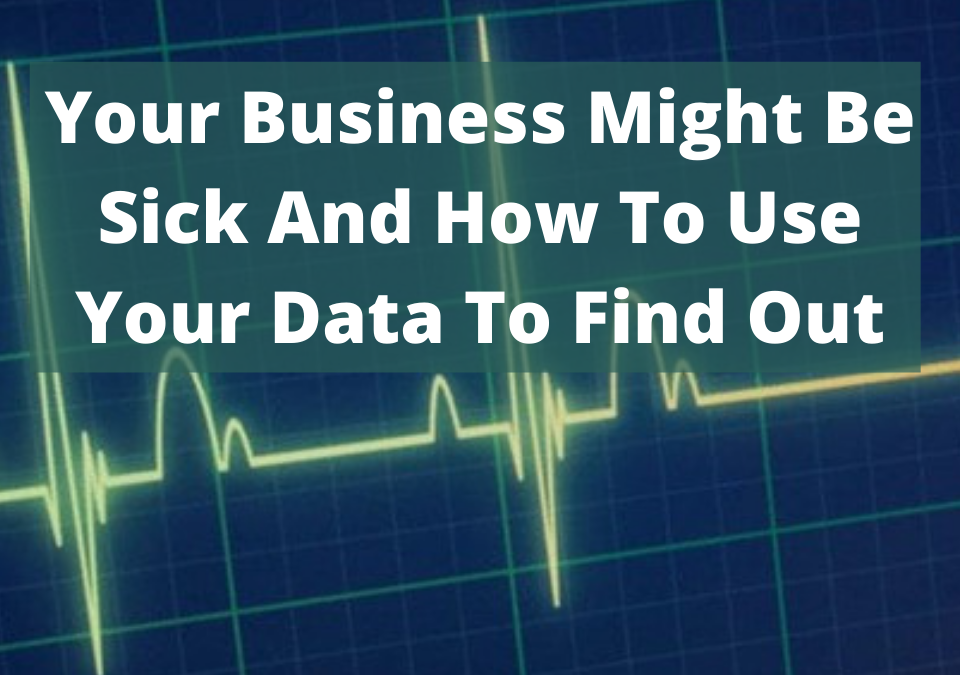
Be Careful with Week Numbers – Week is not Weak!
October 23, 2020
Advanced Grower Solutions Will Host Free Software Demonstration at The Mid-Atlantic Nursery Trade Show MANTS via MANTS.com on their Business Hub
December 23, 2020“Your blood pressure is reading high. That concerns me”.
Those words from your physician can hang in the air like Wile E Coyote after running off the edge of a cliff.
A visit to the doctor yields in a few minutes a check of your vital signs. Your temperature, pulse, respiration rate, blood pressure are cumulatively giving a quick picture of your current health state. Bad indicators in any of these area lead to more diagnosis for cause identification and corrective treatment.
In your body your vital signs are the results of internal physical processes measured and indicated as values.
In your business, vital signs are the results of internal processes like sales, production or shipping, measured and indicated as values.
The problem is that many businesses cannot easily or quickly assess their vital signs because their data is scattered, inaccessible or otherwise not quickly and easily useful for decision making and business insight and quick action to avoid problems or take advantage of opportunities.
A business should have a set of “vital signs”, that is a set of key metrics arranged in convenient online dashboards with values that represent their vital signs.
And, just like regular reviews of your vital signs with your doctor, your business should regularly review the vital signs so diagnostic and corrective actions can be taken before a situation becomes serious.
How do you do that easily?
Define and Record Vital Business Data
Each key area of your business generates data. That data just needs to be gathered consistently, potentially summarized and recorded.
Define
For a grower, this could be purchase order receipts, planned production values, current production variance, planned sales, scrap, planned shipping, sales dollars and margin, greenhouse space analysis data, and many more.
Define your key metrics based on what measures really impact your business. Maybe its timeliness of raw material orders, number of sales calls or production line execution rates. Maybe shipping capacity or greenhouse space values are most important to your business. Try to identify and record those metrics that lead to sales and profits. Place less emphasis on ‘vanity metrics’ that may demonstrate activity but don’t necessarily correlate with improved results.
As John Doer says in the best-selling book Measure What Matters,
“…key results are the levers you pull, the marks you hit to achieve the goal. If an objective is well framed, three to five [key results] will usually be adequate to reach it”
Define your metrics such that they will lead you to the objectives you have set for your business.
Track
We have clients who track some measures on white boards next to the production line.
We have other clients that have spreadsheets or databases to keep data organized and consistent.

Other clients use ERP systems like GrowPoint Cloud, SageX3 or similar to track and record vital business information.
Each of the data records supporting your defined key measures may have its own system or spreadsheet or database but make sure that the appropriate data records are recorded when necessary.
Whatever the mechanisms make sure the habits of your business are to record the data areas that yield this vital information.
Gather Key Metric Data and Compare
The different key data needs to come together to show a more complete picture. Just like your physician looks at many measures to assess overall health your business should do the same.
Creating a business “vitals” dashboard consists of taking the various data sets, calculating the various “vital” values and bringing them together in one easy to access place to show the more complete picture of your business health.
A dashboard can be a regularly updated whiteboard, spreadsheets or more automated tools like using Microsoft PowerBI to automate the gathering, reporting and distribution of key measures.
A dashboard is a good place to juxtapose actuals vs goals and variances that need to be addressed. Its also a good place to see how you are progressing on sales, or production or other key values that build throughout the quarter or year.

Modern business intelligence systems like Microsoft PowerBI provide inexpensive and flexible ways to connect to a wide range of data sources and distill meaningful visuals and tables on dashboards in automated fashion. This makes is easier than ever for your business to have automated, customized key metric reporting.
Deploy Data Dashboards and Review
Once created the key metric data dashboard needs to be in the hands of key personnel who can help interpret, assess, diagnose, and correct issues.
Executives, key employees in operations, logistics or sales all can do their job better with easy access to relevant, timely and accurate business vital data.
We have created a wide variety of customized tools for our clients to help them analyze large amounts of data so they can improve their business.
For some clients, we created automated dashboards that update through the day on well-designed web pages. We have other clients we prepare key statistical summaries in mobile friendly emails that show up early in the morning so key decisions can be made.
We have built dashboards for clients showing varieties of measures for Sales data, production data and variance, labor budget and actuals, scrap, retail sales, procurement vendor score cards, greenhouse space analysis and many more.

For other clients we have created automated processes that send mobile friendly emails in the night with their defined summary statistics so that whole executive teams can see the latest key metrics immediately.
Each business has different needs, but the important factor is to get the right data in a timely fashion in front of the right people. We know how to ask the right questions to create a unique analytics platform for your organization.
Diagnose and Act
When the vital signs of the business are in the right hands accurate diagnosis and proactive diagnosis can be made. Then, agreed to corrective actions can be implemented.
When done consistently with the right personnel, this keeps key management and employees on the same page, improves communication and results in faster resolution of potential issues.
How are Your Vital Signs?
AGS uses a variety of internal and commercial data tools like Microsoft Power BI to help growers automated the process of gathering, normalizing, calculating and distributing key vital measurements for the business.
The up-front cost of creating and automating your vital data dashboards pales in comparison to the value and return you can create by proactive diagnosis and correction of issues, freeing employees from dull repetitive tasks for higher value work and getting data in the right hands at the right time.
The AGS team can help you identify data sources, prepare them, build datasets and dashboard automation, and distribute to the team helping improve your business results. If you have employees that are doing repetitive report creation or have disparate data sources that are difficult to tie together for meaningful insights let’s talk. Contact us for a free consultation.





